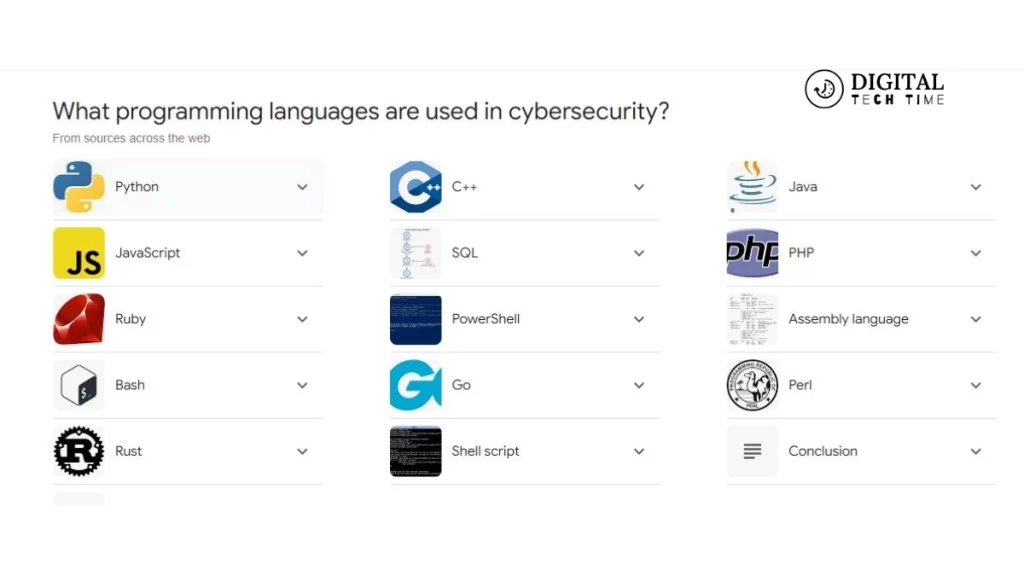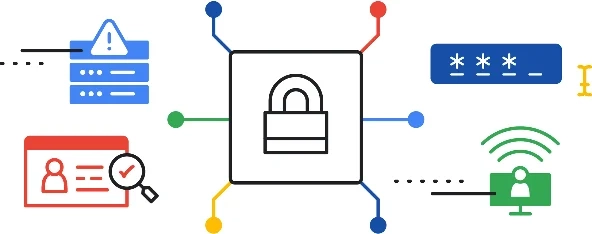The Role of Coding in Cybersecurity Careers
Cybersecurity has emerged as a critical field in the ever-evolving digital landscape, safeguarding individuals, organizations, and nations from malicious cyber threats. As technology advances, the demand for skilled cybersecurity professionals has skyrocketed, creating many exciting career opportunities. However, to thrive in this dynamic field, possessing coding skills has become an indispensable asset.
Table of Contents
The Importance of Coding in Cybersecurity
Coding lies at the heart of cybersecurity, enabling professionals to understand, analyze, and manipulate digital systems effectively. From developing security tools and applications to identifying and mitigating vulnerabilities, coding proficiency empowers cybersecurity experts to tackle complex challenges head-on. Without a solid grasp of coding, many aspects of cybersecurity would remain inaccessible, hindering the ability to protect against evolving cyber threats.
How Coding Skills Enhance Cybersecurity Professionals

- Vulnerability Assessment and Penetration Testing: By leveraging coding skills, cybersecurity professionals can create custom scripts and tools to identify and exploit vulnerabilities in systems, networks, and applications. This allows for more comprehensive and targeted security assessments, ensuring potential weaknesses are identified and addressed proactively.
- Incident Response and Forensics: When a security breach occurs, coding skills enable cybersecurity experts to analyze and interpret digital evidence, reconstruct attack scenarios, and develop automated tools for incident response and recovery. This expedites the investigation process and minimizes the impact of cyber attacks.
- Automation and Scripting: Repetitive tasks, such as system monitoring, log analysis, and data processing, can be automated through coding, freeing up valuable time and resources for more complex tasks. Scripting also allows for creating customized security solutions tailored to specific organizational needs.
- Malware Analysis and Reverse Engineering: Understanding the inner workings of malicious software is crucial in combating cyber threats. Coding skills enable cybersecurity professionals to reverse-engineer malware, analyze its behavior, and develop effective countermeasures, ultimately strengthening an organization’s security posture.
Coding Languages are Commonly used in Cybersecurity.

While various coding languages are utilized in the cybersecurity field, some of the most prevalent ones include:
- Python: Renowned for its simplicity and versatility, Python is widely adopted in cybersecurity for tasks such as scripting, automation, and data analysis.
- C/C++: These low-level languages are essential for understanding and analyzing system vulnerabilities, reverse engineering, and developing security tools and applications.
- Assembly Language: Mastering assembly language is crucial for reverse engineering and malware analysis, as it provides a deep understanding of how software interacts with hardware.
- Bash/PowerShell: These scripting languages are indispensable for automating tasks, system administration, and security operations on Unix-based and Windows systems, respectively.
- Ruby: With its focus on simplicity and productivity, Ruby is often used for web application security testing and penetration testing frameworks.
Cybersecurity Certifications that Require Coding Skills

Several industry-recognized cybersecurity certifications emphasize coding skills as a prerequisite or a significant component of their curriculum, including:
- Offensive Security Certified Professional (OSCP): This highly regarded certification tests candidates’ ability to perform penetration testing and exploit development using coding techniques.
- Certified Ethical Hacker (CEH): While not exclusively focused on coding, the CEH certification requires a basic understanding of scripting languages for tasks such as network scanning and enumeration.
- GIAC Reverse Engineering Malware (GREM): This certification validates an individual’s expertise in reverse engineering and malware analysis, heavily relying on coding skills in languages like Assembly and C/C++.
- SANS Certified Incident Handler (GCIH): Incident response and forensics are critical components of this certification, necessitating proficiency in scripting and automation for tasks like log analysis and evidence collection.
How to Learn to Code for Cybersecurity Careers

Acquiring coding skills for cybersecurity careers can be accomplished through various pathways, including:
- Formal Education: Many universities and colleges offer degree programs or specialized courses in cybersecurity that incorporate coding as a core component.
- Online Courses and Bootcamps: Numerous online platforms, such as Coursera, edX, and Udemy, provide various coding courses tailored to cybersecurity professionals.
- Self-Study: With abundant online resources, including tutorials, documentation, and coding challenges, self-motivated individuals can embark on a self-paced learning journey.
- Hands-on Projects: Practical experience is invaluable in solidifying coding skills. Participating in cybersecurity-focused projects, such as developing security tools or analyzing malware samples, can significantly enhance one’s proficiency.
Resources and Tools for Learning Coding for Cybersecurity

To aid in the learning process, numerous resources and tools are available:
- Online Communities and Forums: Platforms like Reddit, Stack Overflow, and GitHub provide valuable insights, code samples, and opportunities for collaboration with fellow cybersecurity enthusiasts.
- Cybersecurity Blogs and Websites: Reputable blogs and websites, such as SANS Institute, OWASP, and Cybrary, offer many coding tutorials, guides, and best practices specific to cybersecurity.
- Coding Challenges and Capture the Flag (CTF) Competitions: Participating in coding challenges and CTF events allows individuals to apply their skills in real-world scenarios, fostering problem-solving abilities and practical experience.
- Integrated Development Environments (IDEs): Tools like PyCharm, Visual Studio Code, and Eclipse provide a comprehensive coding environment, offering features like code completion, debugging, and version control integration.
Job Opportunities in Cybersecurity that Require Coding Skills

The demand for cybersecurity professionals with coding skills spans across various industries and sectors, including:
- Government Agencies: Organizations like the National Security Agency (NSA), Department of Defense (DoD), and law enforcement agencies actively seek cybersecurity experts with coding proficiency for roles in cyber defense, intelligence gathering, and digital forensics.
- Financial Institutions: Banks, insurance companies, and other financial organizations prioritize cybersecurity to protect sensitive customer data and financial transactions, creating a need for professionals skilled in coding for tasks like application security testing and incident response.
- Technology Companies: Major tech giants, such as Google, Amazon, and Microsoft, employ cybersecurity teams to secure their products, services, and infrastructure, requiring coding expertise for roles in areas like vulnerability research, penetration testing, and cloud security.
- Consulting and Security Firms: Cybersecurity consulting and specialized security companies offer services ranging from risk assessments to incident response, often relying on coding skills for tasks like custom tool development and automation.
- Healthcare and Critical Infrastructure: Sectors like healthcare and critical infrastructure, such as energy and transportation, are increasingly recognizing the importance of cybersecurity, creating job opportunities for professionals with coding abilities to secure sensitive systems and data.
Challenges and Future Trends in Coding for Cybersecurity
While coding skills are essential in cybersecurity, professionals face several challenges and must adapt to emerging trends:
- Rapidly Evolving Threats: As cyber threats continuously evolve, cybersecurity professionals must stay up-to-date with the latest techniques and technologies, necessitating continuous learning and adaptation of coding skills.
- Integration of Artificial Intelligence (AI) and Machine Learning (ML): The integration of AI and ML in cybersecurity is gaining momentum, requiring professionals to develop coding skills in these areas to enhance threat detection, response, and automation capabilities.
- Cloud Security: With the widespread adoption of cloud computing, securing cloud environments has become a critical concern, prompting the need for cybersecurity professionals with coding skills tailored to cloud platforms and architectures.
- Internet of Things (IoT) and Embedded Systems: The proliferation of IoT devices and embedded systems has expanded the attack surface, creating a demand for cybersecurity experts proficient in coding for resource-constrained environments and secure firmware development.
- Collaboration and Cross-Functional Skills: As cybersecurity becomes increasingly multidisciplinary, professionals must possess not only coding skills but also the ability to collaborate effectively with teams from diverse backgrounds, such as risk management, legal, and business operations.
Read Also: Exploring the 5 Biggest Hacks of All Time
Frequently Asked Questions (FAQs)
Is coding essential for all cybersecurity roles?
While coding skills are invaluable in many cybersecurity roles, the level of proficiency required may vary. Some positions, such as security analysts or compliance officers, may require less coding expertise compared to roles like penetration testers or malware analysts.
Can I learn coding on my own for cybersecurity?
Absolutely! With abundant online resources, self-motivated individuals can acquire coding skills through self-study and practical projects. However, formal education or structured training programs can provide a more structured learning path and guidance.
What coding languages should I focus on for cybersecurity?
The most commonly used coding languages in cybersecurity include Python, C/C++, Assembly, Bash/PowerShell, and Ruby. However, starting with a language like Python is recommended, which is relatively easy to learn and has a wide range of applications in cybersecurity.
How can I stay up-to-date with the latest coding trends in cybersecurity?
Attending industry conferences, participating in online communities and forums, and continuously learning through online courses, blogs, and coding challenges are excellent ways to stay informed about emerging coding trends and techniques in cybersecurity.
Can coding skills help me advance my cybersecurity career?
Absolutely! Coding skills are highly valued in cybersecurity and can open doors to more advanced roles, such as penetration testing, malware analysis, and security tool development. They also demonstrate a commitment to continuous learning and adaptability, which is essential in this rapidly evolving field.
Conclusion
In the ever-changing cybersecurity landscape, coding skills have become an indispensable asset for professionals seeking to excel and stay ahead of the curve. Cybersecurity experts can unlock opportunities by mastering coding languages and techniques, from developing cutting-edge security tools and applications to conducting in-depth vulnerability assessments and incident response.







